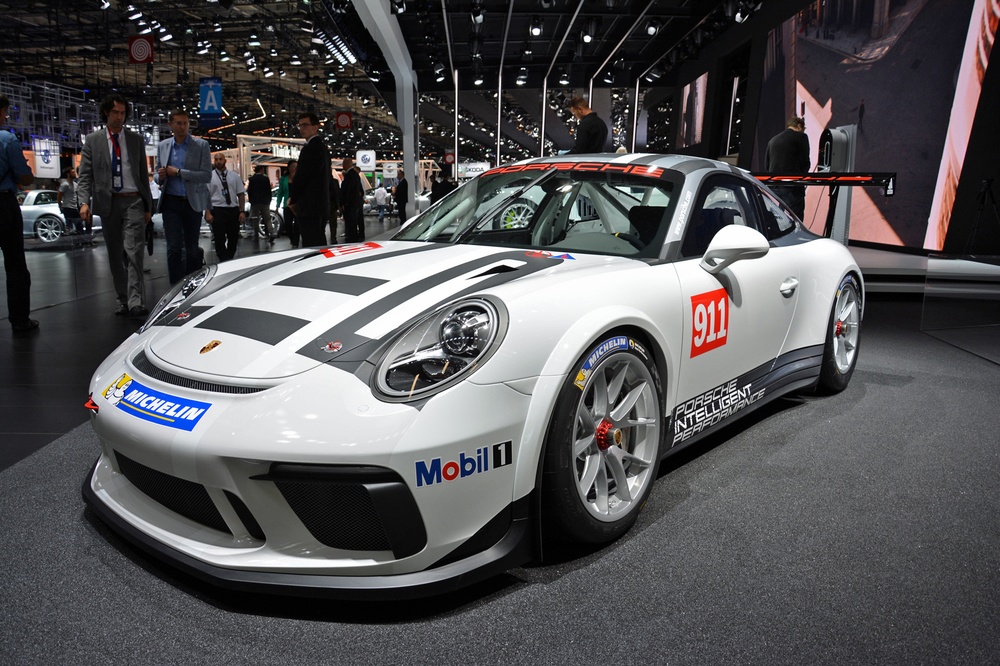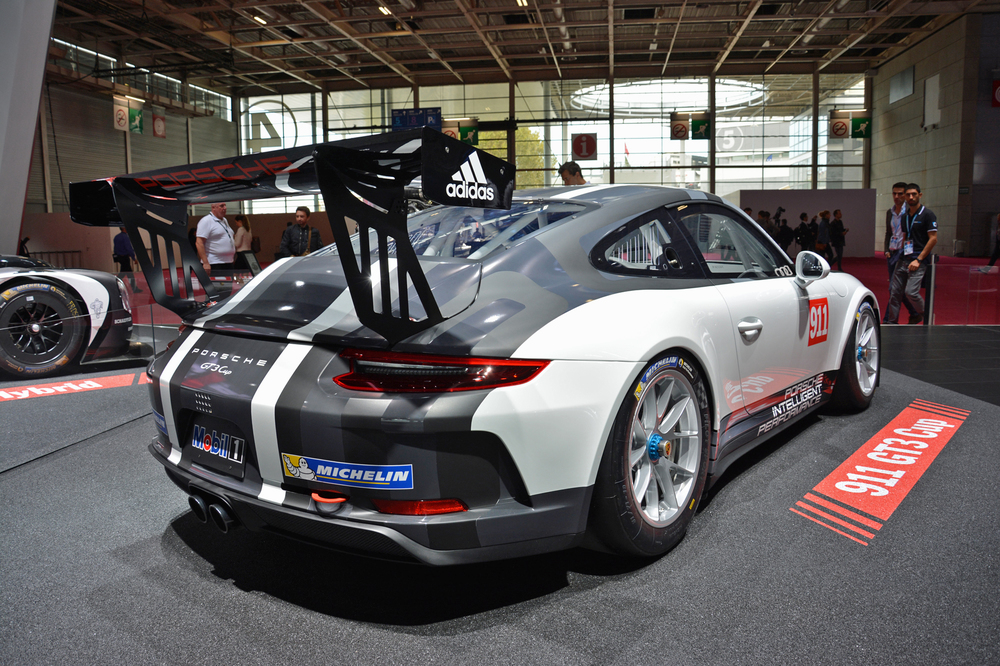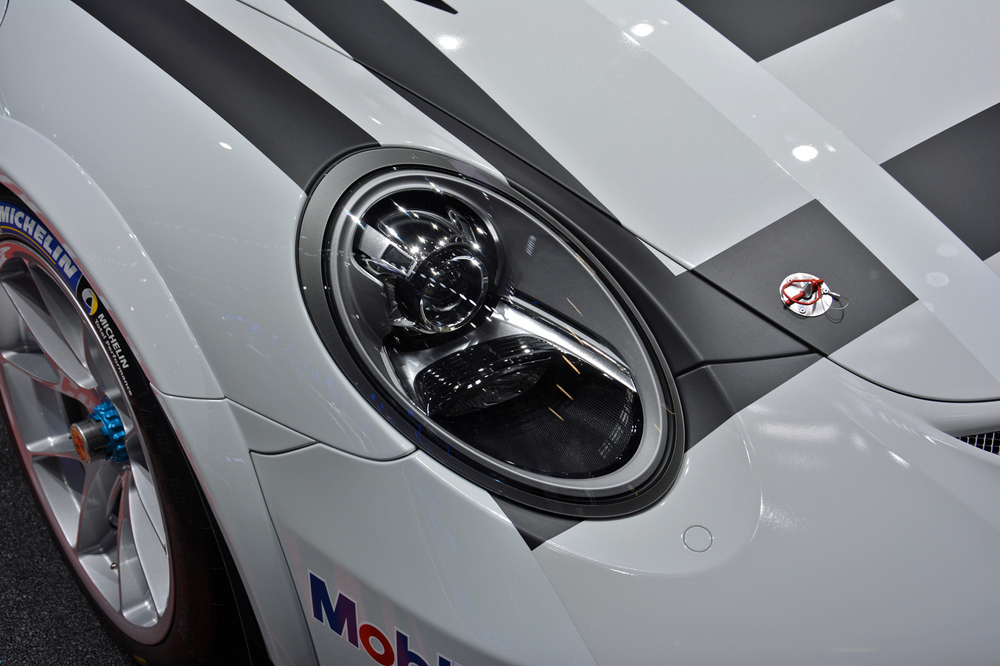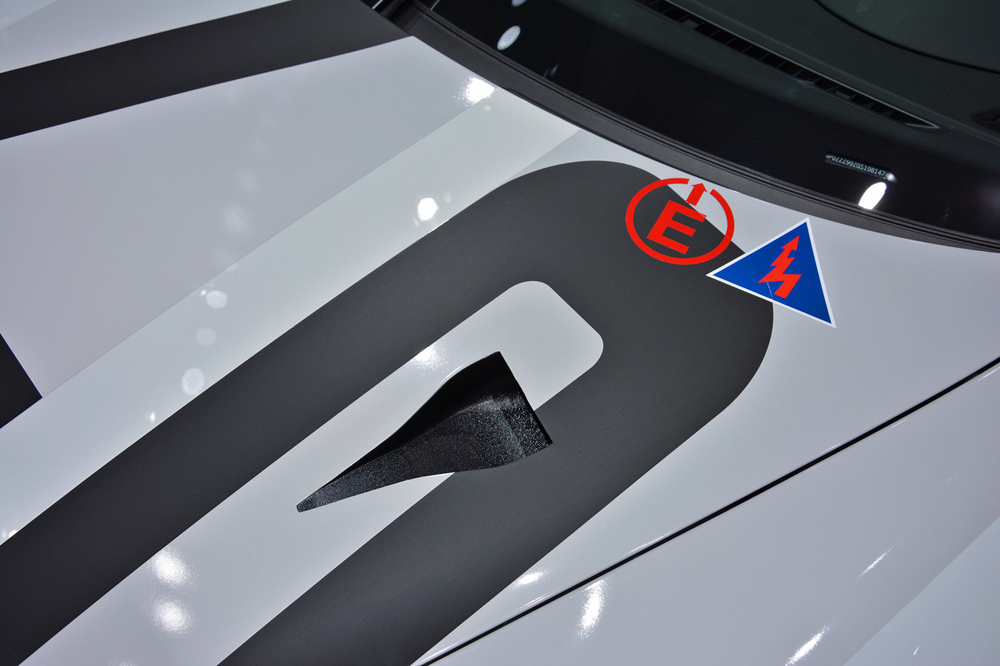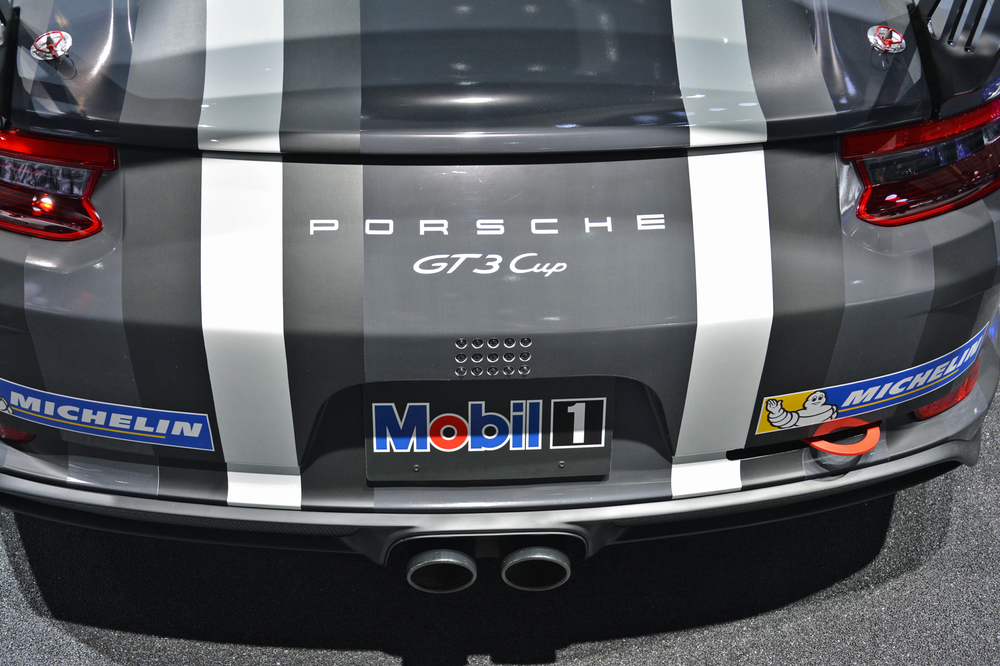The Porsche 911 is one of the most successful race cars ever, with scores of wins over the past few decades. Part of the secret to the 911’s success is its pervasiveness — the darn things are everywhere, in many different races series.
Porsche claims its 911 GT3 Cup is in fact the most produced race car of its kind, and it unveiled an updated version at the 2016 Paris Motor Show. The GT3 Cup is designed for a wider range of skill levels, so you’ll usually see it in lower-level race series in the hands of a mix of professional and amateur drivers, including Porsche-operated series geared toward customers.
One of the biggest changes is in the engine bay, where a new 4.0-liter flat-six engine sits. It produces 485 horsepower, up from 460 hp in the old GT3 Cup. Porsche also installed a new front fascia and rear end, both of which improve downforce, the carmaker says. The massive rear spoiler carries over from the old car, as do the 18-inch center-lock racing wheels and Michelin tires.
Unlike a road-going 911, the GT3 Cup’s interior is geared toward driver safety, not luxury. The car features a full roll cage and a racing seat with heavier bolstering around the head and shoulder areas, which provides better protection, according to Porsche. While many 911s have sunroofs, this one has a rescue hatch to provide quicker access for emergency workers in the event of a crash. Stripping out all of the stock 911 luxuries also reduces weight to 1,200 kilograms (2,645 pounds).
Read more: Porsche Panamera 4 E-Hybrid debuts in Paris
The 911 GT3 Cup is built on the same Stuttgart-Zuffenhausen, Germany, assembly line as 911 road cars, and then taken to Porsche’s motorsport center in Weissach for testing and tuning. Porsche claims to have built 3,031 GT3 Cup racers since the model was introduced in 1998, spanning three 911 generations. That’s a pretty high number for a race car.
The latest GT3 Cup is available to order now, priced at 189,900 euros ($213,000). Buyers will be able to race their cars in the global Mobil 1 Supercup (a support series for Formula 1), the Porsche Carrera Cup in Germany, and at least one race series in North America. Porsche plans to organize 20 race series worldwide for customers that will use the GT3 Cup exclusively.


